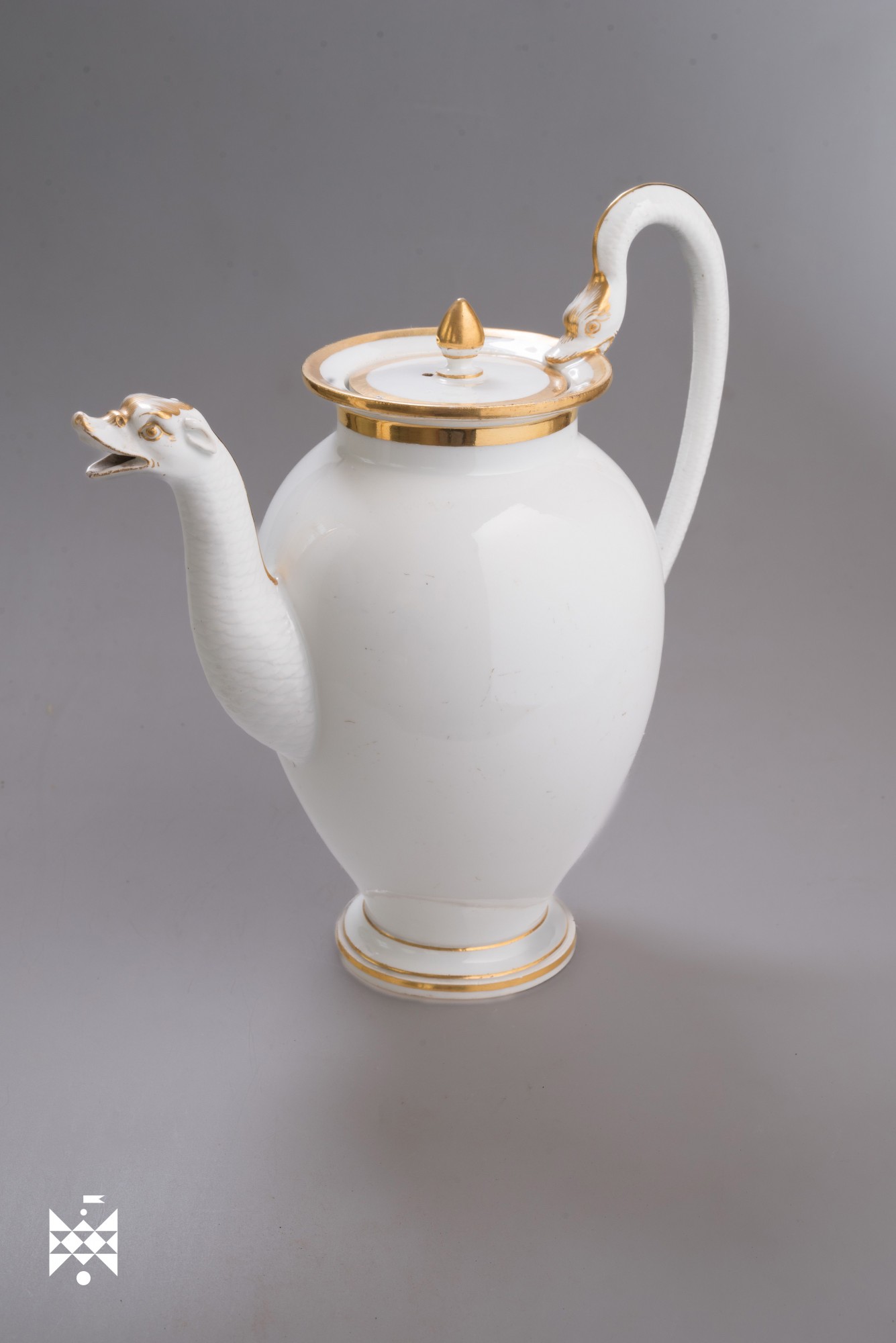Exhibit of the month |
← |
Published: 2023-07-31

Coffee Pot. Meissen Porcelain Manufactory, Germany. Beginning of the 20th century.
Height – 22 cm. Acc. No. VŽM 6955
In 2007, the family of Asia Vitėnienė (1917–1996), a doctor, artist, and member of the Folk Art Society, handed over to the museum a collection of paintings, works of applied art, photo books and documents.
One of the most valuable exhibits from Vitėnienė's applied art collection is the graceful, moderately gilded milk-coloured coffee pot dating back to the beginning of the 20th century. It was made by the Meissen Porcelain Manufactory. The porcelain coffee pot is decorated with figures of dragons and various elements in the chinoiserie style.
In the 17th and 18th centuries, the chinoiserie (chinoise is French for Chinese) style became rather popular in European applied art. Its characteristic feature is the imitation of the motifs of the Far Eastern art style in art and architecture. The style spread in Europe together with Chinese porcelain, which reached the continent through the Great Silk Road. This resulted in a close contact between Chinese and European cultures, which continued until mid-20th century. Tapestries manufactured in Germany, France, and the United Kingdom, interiors of estates, park structures and porcelain items were decorated by depicting exotic scenes and figures of fantastic animals. Founded in Germany, near Meissen, at the beginning of the 18th century, the porcelain manufactory (Meissen Porzellan) became the main producer of hard-paste porcelain in Europe and remained so for a long time. In 1710, the production of porcelain items moved to Albrechtsburg, the residence of the Saxon prince-electors. Later, the manufactory operated in Triebischtal, a suburb in Meissen. From 1731 onwards, two crossed swords have become the symbol and sign of the Meissen Porcelain Manufactory, which has been operating to this day.
Prepared by Irina Nikitina, curator of the VGMJH art collections
© Photograph courtesy of Paulius Račiūnas
© From the collections of VGMJH
| ↑ | ← |
